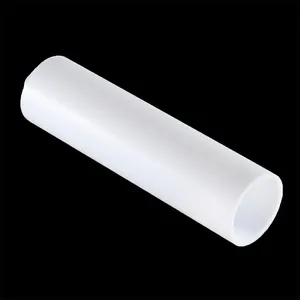Polytetrafluoroethylene, commonly known as PTFE or Teflon, is a versatile material widely used for tubing in various industries. Its unique properties make it an ideal choice for applications requiring high temperature resistance and chemical inertness. In this guide, we’ll explore the specifications, properties, and applications of PTFE tubing to help you make informed decisions for your projects.
PTFE tubing is renowned for its exceptional properties, which include:
- High Temperature Resistance: PTFE can withstand temperatures ranging from -328°F to 500°F (-200°C to 260°C), making it suitable for extreme environments.
- Chemical Inertness: PTFE is resistant to most chemicals, acids, and solvents, which ensures longevity and reliability in corrosive environments.
- Low Friction: The low coefficient of friction makes PTFE an excellent choice for applications requiring smooth, non-stick surfaces.
- Electrical Insulation: PTFE is an excellent insulator and is often used in electrical applications.
- Non-Flammable: PTFE is non-flammable, adding an extra layer of safety in high-temperature applications.
PTFE Tubing Dimensions and Size Guide
When selecting PTFE tubing, it’s important to consider the dimensions and size to ensure proper fit and function. Here are some common PTFE tube dimensions:
- Inner Diameter (ID): The measurement of the tube’s internal width, critical for flow rate and fitting compatibility.
- Outer Diameter (OD): The measurement of the tube’s external width, important for fitting into existing systems.
- Wall Thickness: The distance between the inner and outer diameter, which affects the tubing’s pressure rating and flexibility.
PTFE Pipe Size Guide
PTFE tubing comes in various sizes to accommodate different applications. Common sizes include:
- Microbore Tubing: With an ID as small as 0.010 inches, suitable for precise applications like medical devices.
- Standard Tubing: Ranges from 1/8 inch to 1 inch in ID, used in general industrial applications.
- Large Bore Tubing: Greater than 1 inch in ID, used for high-flow applications.
Applications of PTFE Tubing
PTFE tubing’s unique properties make it ideal for various applications, including:
- Chemical Processing: Its chemical resistance makes it perfect for transferring aggressive substances.
- Medical Devices: The biocompatibility and low friction make PTFE tubing suitable for catheters and other medical instruments.
- Automotive: Used in fuel lines, brake systems, and emission control systems due to its high-temperature resistance and durability.
- Aerospace: Its lightweight and high-performance characteristics are beneficial in aerospace applications.
Conclusion
Understanding PTFE tubing specifications, properties, and applications is crucial for selecting the right tubing for your needs. Whether you’re working in chemical processing, medical, automotive, or aerospace industries, PTFE tubing offers unmatched performance and reliability. For more detailed information on PTFE tubing, consult industry standards and manufacturer guidelines to ensure optimal application.
Explore the vast potential of PTFE tubing in your next project, and leverage its unique properties for enhanced performance and durability. Feel free to reach out with any questions or for further guidance on selecting the right PTFE tubing for your application.








